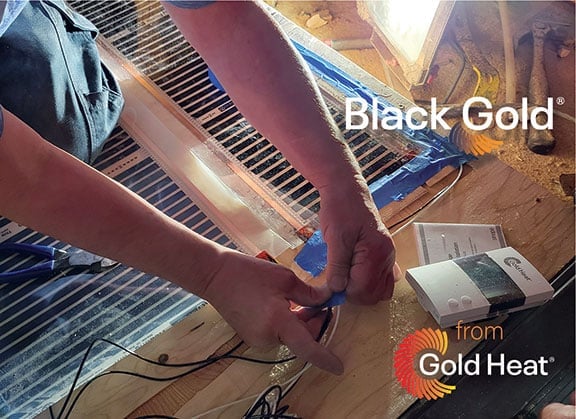Thom Stanton President Emeritus, Tiny Home Industry Association
I wish to offer my support to ASTM International guiding the collaborative development of standards for a tiny house. Additionally, standards are suitable for smaller-sized permanent homes, relocatable residences, and tiny home-related housing products.
Here is a quick summary of my thoughts and reasoning.
Why standards for small and tiny homes?
We are in the midst of a housing crisis and yet special allowances must be made for the manufacture and use of smaller-sized homes. There’s nothing innovative about small homes, and nothing different in their construction.
In this context, I believe the difficulty of finding a ways-and-means for the allowance of a smaller home illustrates the need to shift our perspectives. Furthermore, to better understand changes in housing needs, and to support a broader range of low-cost homeownership options.
Additionally and maybe, more importantly, I believe the means to create a simple yet compliant shelter. This shelter will be designed to lower costs by reducing housing size. Plus, ingrain a solid sense of personal security and privacy which are basic rights and privileges granted to all in an advanced society.
Smaller homes break the price-per-square profit model. Bigger housing has fallen out of fashion. However, it doesn’t make them inherently wrong. Perhaps, less popular. The public has the right to “go tiny!”.
Multi-use Plug-n-Play Specs
Compliant home design is akin to a big puzzle. This leverages multiple sources for requirements that ultimately define site-specific design criteria.
As one who already references multiple sources for guidance, I believe a strategically segmented and multifaceted series of standards. These standards will address small housing needs well beyond what fits within a tiny-sized footprint. Additionally, merely suiting one form of manufacture, or exclusively supports a more singular field of special interest.
Such standards, when issued by an objective multidisciplinary body like ASTM, could be most suitably applied across various use case scenarios. These scenarios are for refining housing classifications, via multiple membership organizations, as output through many manufacturing methodologies. This is an untold administrative and regulatory scenario.
Housing is changing; we must adapt.
- Thom Stanton
Many of the manufacturers with whom I’ve worked produce Recreational Vehicles, Recreational Park Trailers, and Off-Site Modular Constructs. For most, it seems that meeting specifications is as simple as having a trusted source for cited standards. ASTM seems an appropriate solution.
A Means of Proof and Approval
Of course, for all planning and approval scenarios, it is necessary to illustrate adherence to specific criteria and provide proof of compliance. While conventional housing has clear pathways for average size homebuilding, tiny-sized homes on foundations often face great opposition. Additionally, it’s harder still to garner authorized use of a fully compliant relocatable residence as they were built (to date) as unclassified “tiny houses on wheels.”
Furthermore, with building officials, fire marshals, and state/municipal housing authorities, there is push-back. This pushback seems rightfully focused on bridging concerns for safety and liability. I’ve witnessed that where proper precedent exists, open-minded authorities and other interested parties are apt to adopt changes. In addition, that obviously enhances or appropriately append existing tiny house building standards.
Of course, new practices are harder to implement. I feel it’s important to remember that all specifications were at one time an amalgam of best practices. These practices fight to prove themselves worthy of standardization. Change is tough but often good. Especially when what was once advanced new products and practices settle in and become more “usual and customary.”
For example, with tiny houses on wheels, what were once the most typical “alternative methods” are now quite conventional best practices. Once published as specifications, these standards become the basis of purpose-driven media.
Building standards for a tiny house
- industry-specific summaries of minimum requirements
- role-based standard sets (e.g. design, chassis, frame fastening, ground anchoring, inspection, etc.)
- professional certification criteria
- in-depth seminars
- video tutorials, how-to guides, workbooks, and much more.
Tiny Standards: Bigger than Any One of Us
It looks like a global cadre of designers, builders, manufacturers, and component suppliers are ready to bring standards-ready best practices into the formal development process.
To me, the pledges of support and participation from invested organizations and other interested parties illustrate a broadly held desire to finally solve the small-and-tiny housing conundrum through the development of specifications for standardized components, assemblies, methods, and other criteria that may be used to meet multiple compliance requirements.
I hope ASTM accepts its proposed role as an objective party to guide the process and help ensure equilibrium during the development of standards suitable for small and tiny homes.
Contact:
Thom Stanton
Co-Founder/Chief Exec
Timber Trails LLC & GoTiny!
President Emeritus, Tiny Home Industry Association
State Chapter Leader, American Tiny House Association (Virginia)
Lead Organizer, Uniform Compliance Initiative for Tiny Homes
Founder, RVA Tiny House Team (Richmond, VA)
Email: GoTiny.com@gmail.com
804 714 6247
About Thom
As a semi-retired (yet sadly still working design professional) I provide architectural and structural design services for small residences, modular buildings, accessory dwelling units, tiny houses on wheels, and custom chassis/fabrication.
A creative to the core, I’m still a rules-related artist and process-oriented commercial designer. I remain actively engaged in design for a wide variety of construction modalities that includes stick, steel, SIP, timber frame, shipping containers, and other forms of alternative construction.
A staunch tiny housing advocate, I’ve written rather exhaustively about the progress of the tiny home industry. Additionally, I continue to foster the need for type-appropriate standards for tiny house building. Moreover, these structures will be recognized as principal residential structures, accessory dwelling units, and relocatable residences.
Tom bridges designers and builders by assisting homebuyers to find areas that support smaller-sized housing opportunities. For those homebuyers seeking a more mobile life, he continues to work to implement standardization of best practices for design, engineering, manufacturing, inspection, and certification.
Gold Heat is a proud member of THIA. We plan to be a part of the standardization of tiny home building. This includes flooring and tiny house heating standards.
- Brian Bishop, Gold Heat CEO
Working as a tiny industry advocate, I establish local tiny house group meetups. These meetups are supported through organic gatherings, online events, educational workshops, and live presentations at festivals throughout the United States.
Tom established the Uniform Compliance Initiative for Tiny Homes. This initiative is a precursor to reestablishing the Tiny Home Industry Association during my role as its first president. As a State Chapter Leader for the American Tiny House Association, I’ve advocated for state and local efforts to expand land use allowance for tiny homes.
Moreover, Tom formally participates in several multi-year efforts to introduce and enhance small and tiny-sized construction standards. Tom has done this through code change cycles for the International Residential Code and Virginia’s Uniform Building Code. Additionally, I have supported statehouse bills focused on housing issues and participated in the development of Accessory Dwelling Unit standards and their implementation.
He is responsible for writing the design criteria section of the L.A. ordinance for tiny houses on wheels. This criterion serves as the basis for several tiny home-related zoning ordinances.
Moreover, Tom supports university and high school building science programs. Additionally, Tom develops plans and systems of affordable tiny home construction for local housing authorities, homeless outreach groups, disaster relief organizations, and U.S. veteran housing.
Six years ago, Tom sold the big house and moved into a huge RV. Then, Tom downsized to two smaller RVs to travel to tiny house festivals. Afterward, he designed and built the tiny house on wheels that he and his family currently liveaboard.
Tom gladly lives the tiny life. His family lives on that thin and tenuous boundary between our proudly intentional nomadic mobility and an anxiety-inducing placelessness. Additionally, Tom willingly took our chances and still lives along that fragile fringe. He hopes his efforts to “legitimize and legalize” tiny living options will open the door more widely for others to enjoy a small, simple lifestyle.
We appreciate all the paths that Thom has forged for the tiny house industry and his support of the development of new global ASTM standards for tiny houses.
About the author
Janet Thome
janet@tinyhouseallianceusa.org is the Founder and President of Tiny House Alliance USA and is leading the exploratory ASTM Tiny House Initiative To Develop Tiny House Specific Standards. Please contact Janet to be added to the stakeholder’s list.
Learn More About The ASTM Tiny House Standards Opportunity




